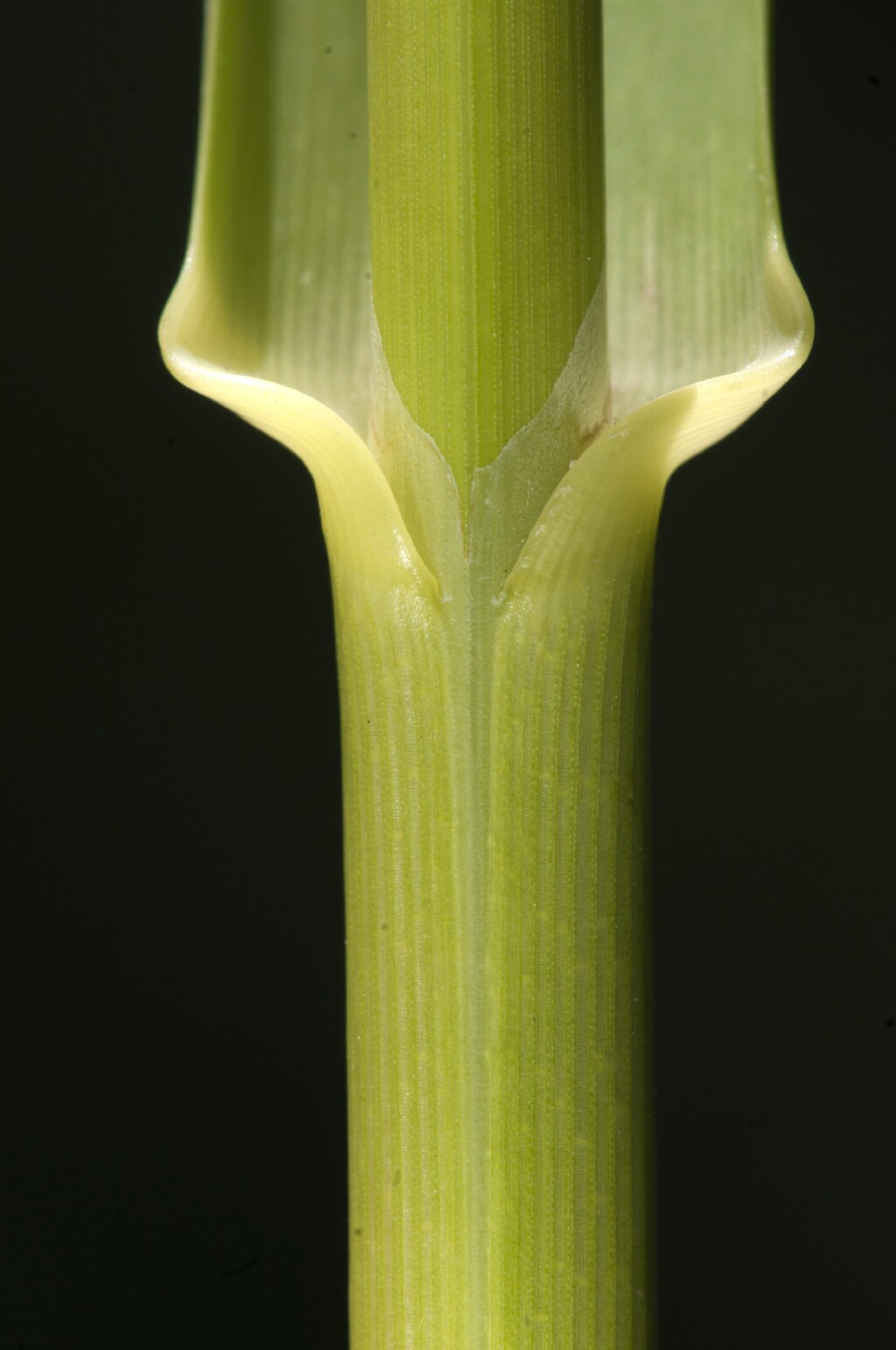Glyceria maxima
(Hart.) Holmb. Reed Sweet-grassVigorous, long-rhizomatous perennial, culms stout, ascending to erect, to 2.5 m high. Leaf-blades to 60 cm long and 18 mm wide; sheaths closed toward base, transverse veins indistinct or lacking; ligules 3–6 mm long, obtuse, but often with a short central point. Inflorescence a loose contracted or open panicle, 12–45 cm long. Spikelets 4–10-flowered, 5–12 mm long; lower glume 2–3 mm long, upper glume 0.5–2 mm longer than lower; lemma 7-nerved, ovate, 2.5–4 mm long, firm, rounded at apex, scabrous; palea shorter than or equal to lemma. Flowers Nov.–Feb.
GleP, VVP, VRiv, MuF, GipP, OtP, Gold, CVU, NIS, EGL, EGU, HSF, HNF, OtR, Strz. Naturalized in all States except SA, NT, also North America, New Zealand. Indigenous to much of Europe and temperate Asia. Initially promoted as a useful fodder-grass in and around farm swamps, dams and streams, but now established in the wild, often to the local exclusion of other riparian species in southern districts e.g. Pakenham, Warragul, Noojee, Timboon, and in irrigation areas to the north (e.g. Cohuna).
Cyanic compounds are commonly present in non-flowering parts of the plant and apparently increase during spring when the grass is growing fastest. Cattle deaths in, e.g., South Gippsland during spring have been attributed to the species.
Walsh, N.G. (1994). Poaceae. In: Walsh, N.G.; Entwisle, T.J., Flora of Victoria Vol. 2, Ferns and Allied Plants, Conifers and Monocotyledons, pp. 356–627. Inkata Press, Melbourne.
 Spinning
Spinning




